Analysis of Verbal and Nonverbal Communication in the Workplace
VerifiedAdded on 2022/08/20
|5
|1019
|13
Report
AI Summary
This report provides an analysis of observed communication styles within a workplace setting. The author, having recently joined the workplace, observed various forms of verbal and nonverbal communication among colleagues. The report highlights the significance of gestures, such as hand movements, in reinforcing verbal messages and capturing attention. It also explores the role of body language in conveying emotional states, such as nervousness, happiness, and irritation. Furthermore, the report discusses instances of repeating instructions and highlighting relevant information as part of the verbal communication process. The author concludes that both verbal and nonverbal communication offer valuable insights into an individual's personality and emotional state, emphasizing the importance of effective communication skills in the workplace. The author observed how repetition was used to emphasize key points and the use of non-verbal cues to gauge the emotional state of employees, concluding that both were useful. References are provided.
1 out of 5
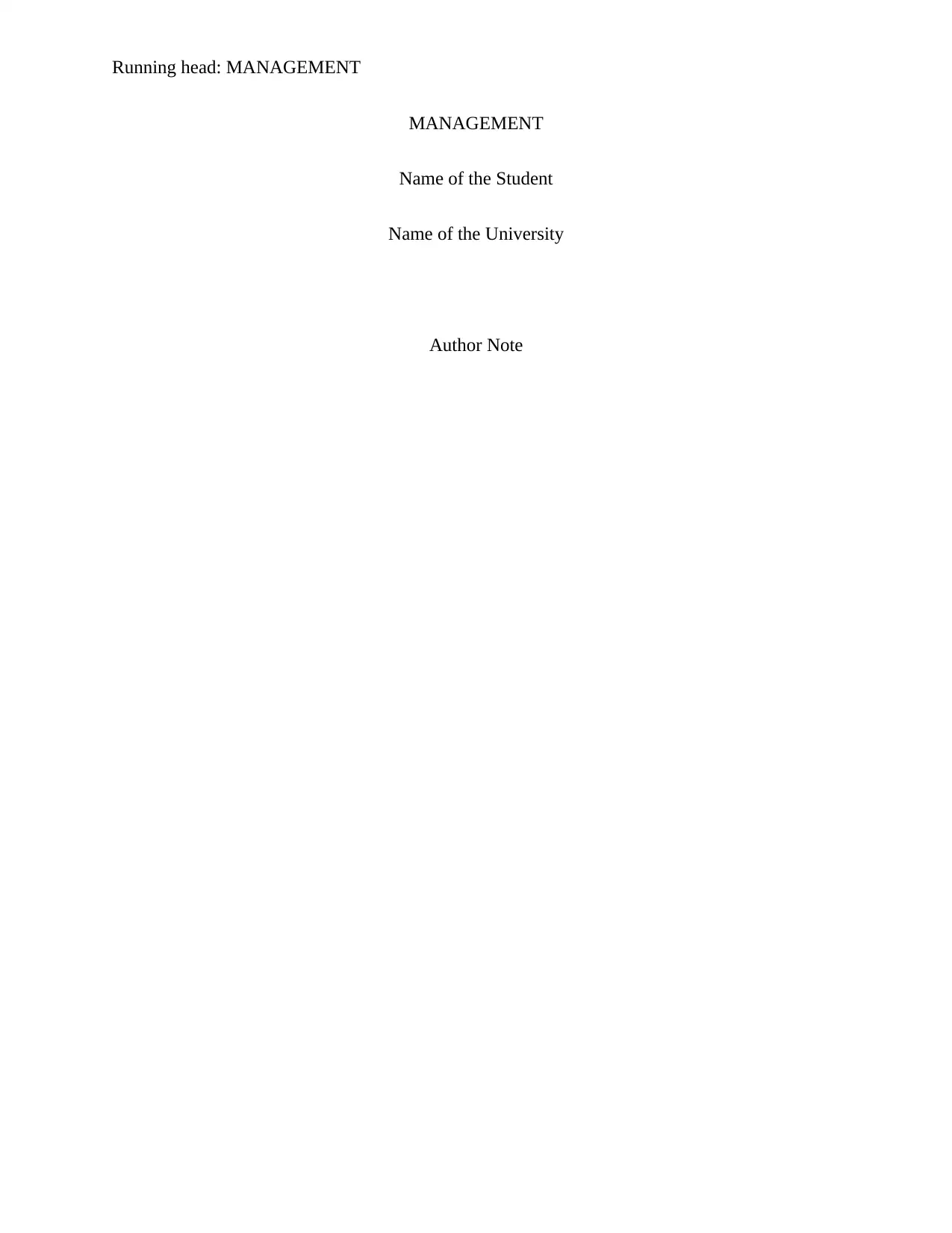
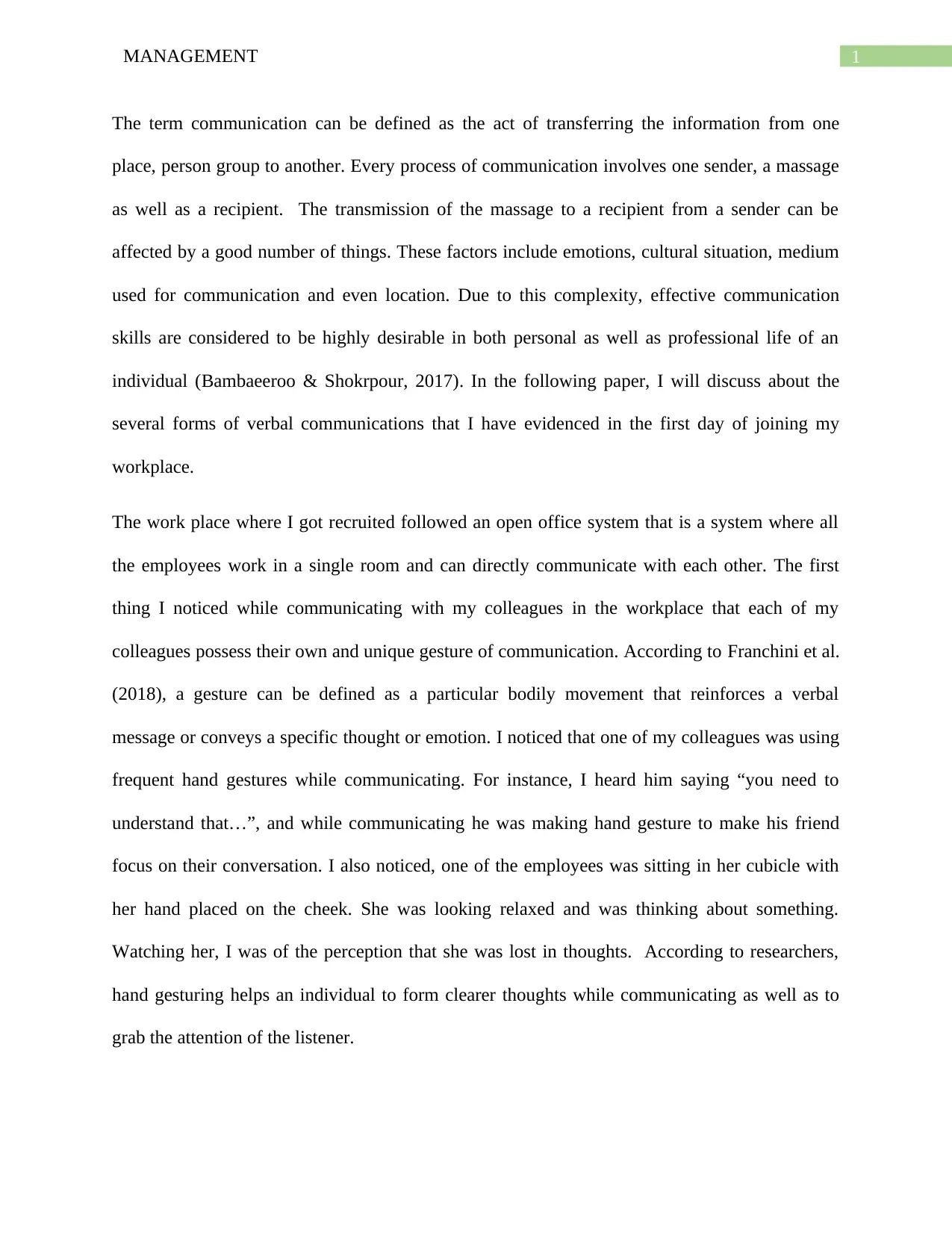
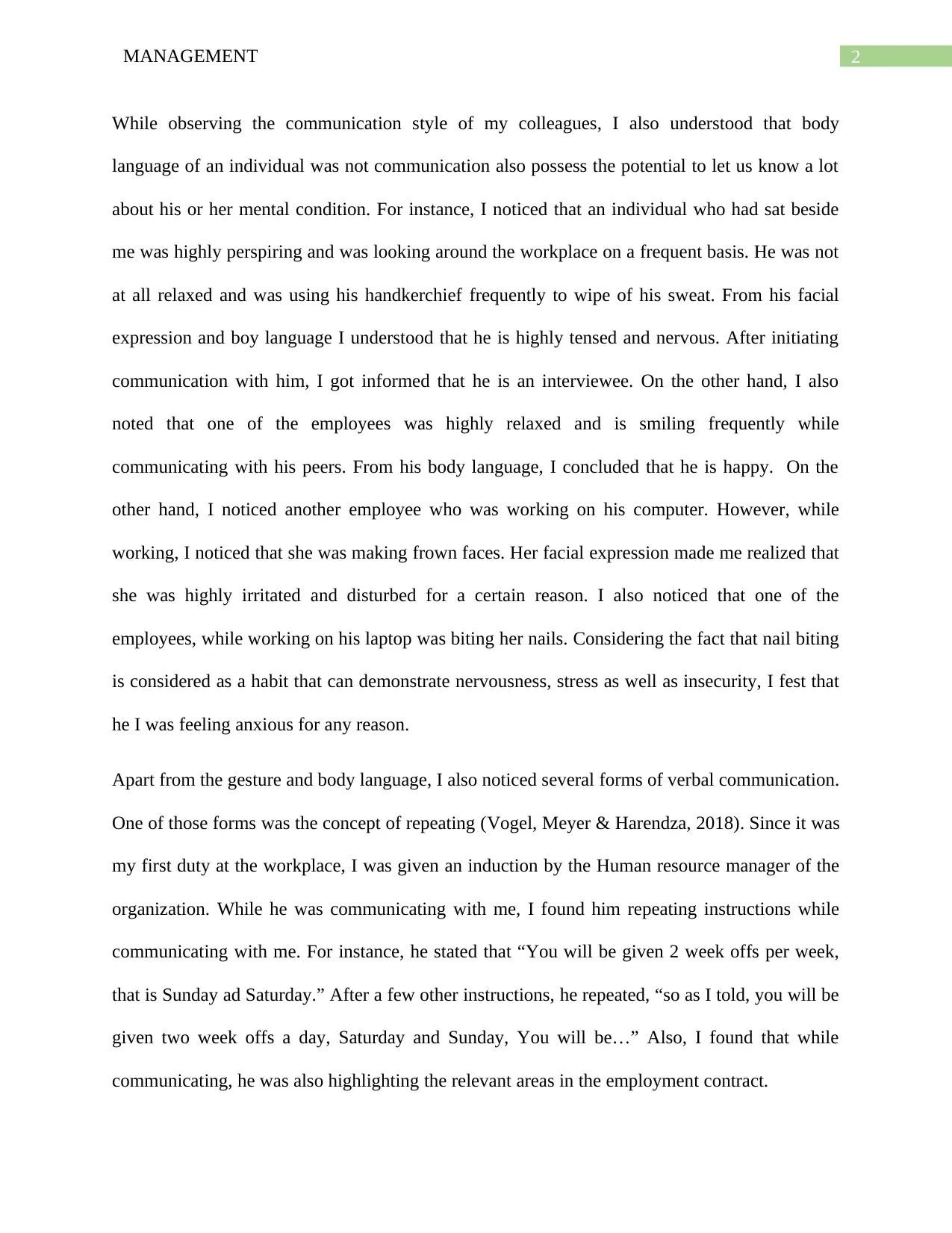

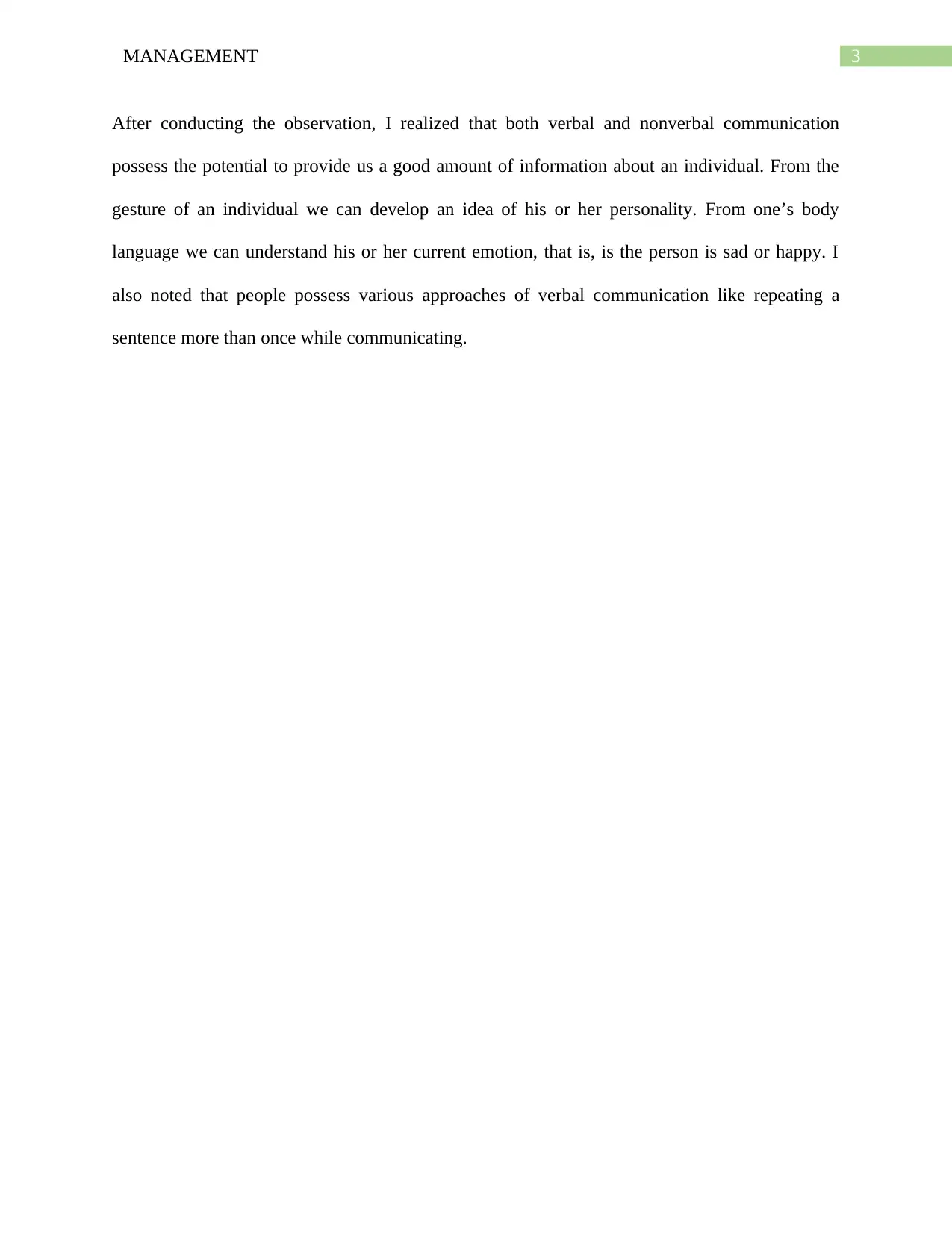
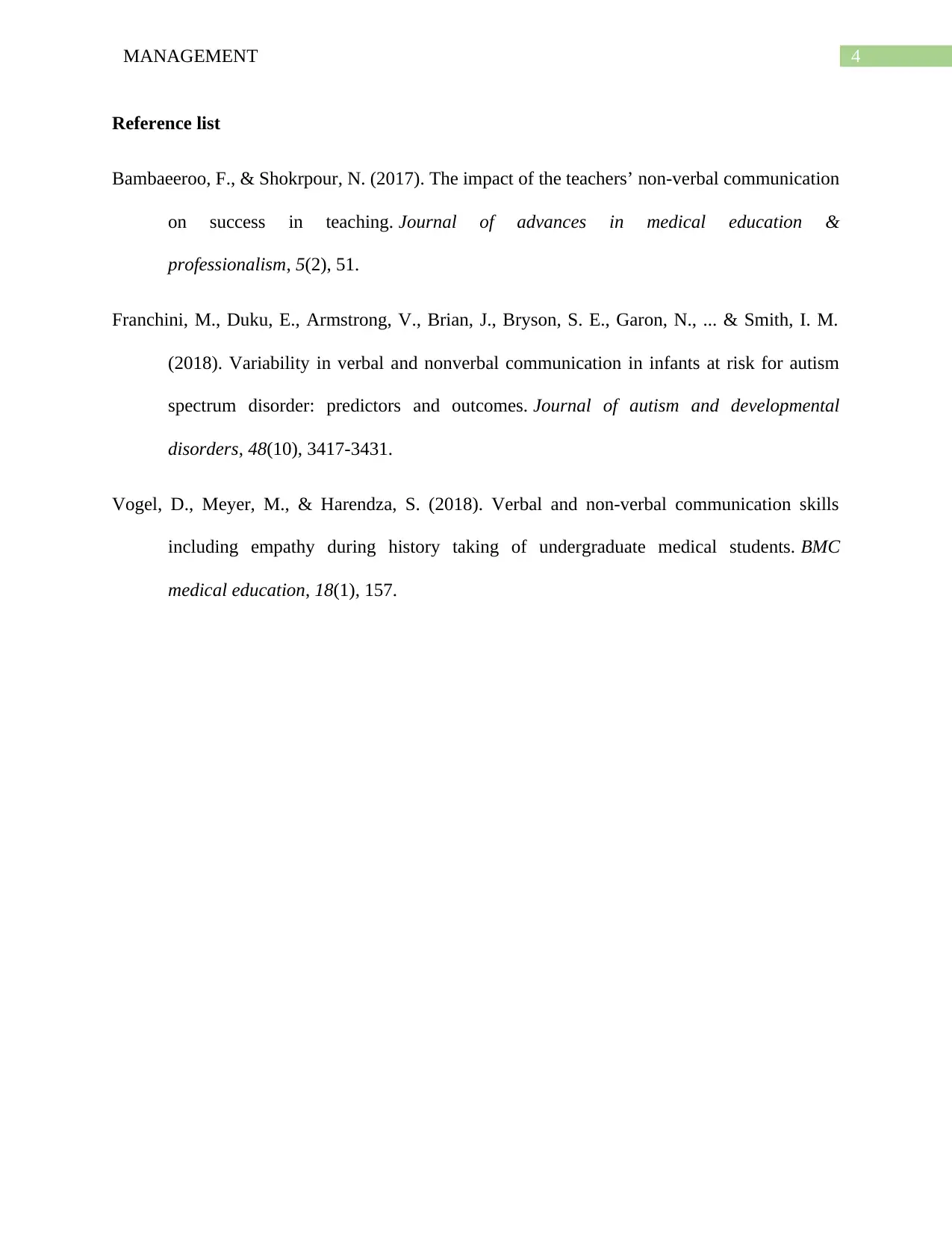






![[object Object]](/_next/static/media/star-bottom.7253800d.svg)